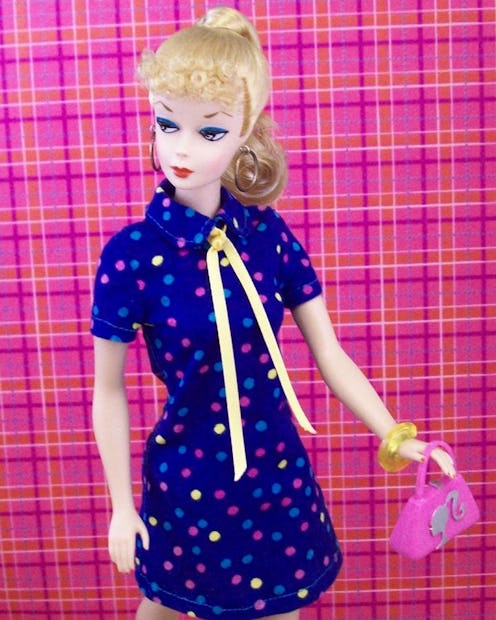Style
The Real Reason Barbie's So Tall & Skinny?

Ahh, Barbie. Never has one doll been imbued with such oversized cultural significance. Like them or hate them, Barbie dolls have long since ceased being mere playthings, becoming an 11.5-inch totem to shifting ideas about American femininity. As such, a lot of attention has been paid to Barbie's body, specifically whether its inhuman proportions give little girls the wrong idea about what they should look like.
Fast Company's Mark Wilson recently visited the Barbie corporate headquarters, where he found designers to be "anything but the Stepfordian dictatorship seeking to deliberately crush a young girl's body image as many critics assume." That's not an entirely fair characterization of Barbie's critics, however, as most of whom don't see Barbie's body as a nefarious patriarchal plot so much as a representation of society's unattainable body standards. Barbie as symptom, not disease.
But "Barbie’s body was never designed to be realistic," for reasons having nothing to do with setting idealized body standards, said Kim Cultone, Barbie's vice president of design. "She was designed for girls to easily dress and undress," continued Cultone in an interview with Wilson. "There are some that her legs don’t even bend. There are some that her arms are straight. Primarily it’s for function for the little girl, for real life fabrics to be able to be turned and sewn, and have the outfit still fall properly on her body."
Cultone also cites "heritage" as a reason why drastic changes to Barbie's proportions are impossible. Moms often hand down Barbie clothes down to their daughters, and "so keeping the integrity of that is really important," she told Wilson. "Everything may not always be able to fit every doll, but it’s important to me that the majority of it does."
Response from feminist bloggers has largely been critical. "Culmone is right — Barbie is a heritage thing," wrote Julia Sonenshein at the gloss. "And unless Mattel is willing to address the very real implications of their dolls, women will continue to pass down negative sense of self worth from one generation to another." Kelly Faircloth at Jezebel asserted that "the ability to make properly fitting doll clothes shouldn't outweigh the possible impact on girls." But not everyone thinks Cultone's explanations are a cop-out. "So bored with 'Barbie is an unrealistic body type,'" tweeted artist Molly Crabapple. "Representational art is not a 1 to 1 representation of reality."
Image: Partymonstrrrr/Flickr